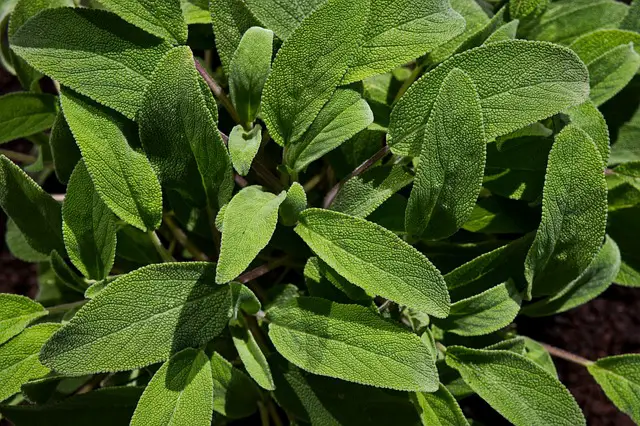White spots on sage leaves can be a sign of a fungal infection, which can be a common problem for many gardeners. These spots can be caused by a variety of factors, including weather conditions, poor soil quality, and improper watering.
While the white spots themselves may not be harmful to the plant, they can be unsightly and can lead to more serious problems if left untreated.
Identifying the cause of white spots on sage leaves is important in order to effectively treat the issue. One of the most common causes of white spots is powdery mildew, a fungal disease that can spread quickly if not addressed.
Other potential causes include bacterial leaf spot, downy mildew, and rust. Understanding the symptoms of these diseases can help gardeners identify the problem and take the appropriate steps to treat it.
Preventing fungal infections is key to keeping sage plants healthy and free from white spots. Proper soil drainage, adequate air circulation, and regular watering can all help prevent the growth of fungi.
Additionally, using a fungicide on a regular basis can help keep sage plants healthy and free from infection. If white spots do appear, removing affected leaves and treating the plant with a fungicide can help prevent the spread of the disease.
Key Takeaways
- White spots on sage leaves can be caused by a variety of factors, including fungal infections and weather conditions.
- Identifying the cause of white spots is important in order to effectively treat the issue.
- Preventing fungal infections through proper soil drainage, air circulation, and regular watering can help keep sage plants healthy.
Related posts:
Identifying White Spots on Sage Leaves
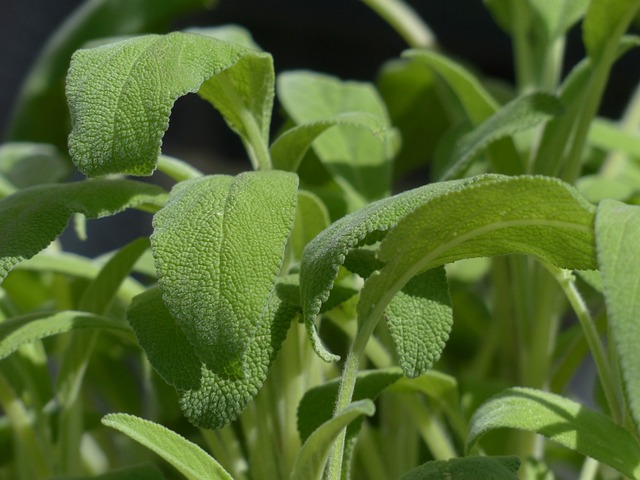
White spots on sage leaves can be a sign of various issues ranging from fungal diseases to pests. Identifying the cause of the white spots is crucial for proper treatment. Here are some signs to look for when identifying white spots on sage leaves:
- Powdery Mildew: Powdery mildew is a fungal disease that appears as a white, powdery substance on the leaves of the sage plant. The white spots usually appear on the upper surface of the leaves and can spread to cover most of the leaves or affected areas. In severe cases, the leaves will turn yellow and dry out. Powdery mildew is common in warm and humid weather conditions.
- Alternaria Leaf Spot: Alternaria leaf spot is a fungal disease that causes small rusty spots or blotches with white or grey centers on the top of the leaf. Warm and humid weather conditions can make it worse. Removing infected parts and pruning to improve air circulation can help prevent the spread of the disease.
- Spider Mites: Spider mites are tiny pests that can cause white spots on sage leaves. They are usually found on the undersides of the leaves and can cause the leaves to turn yellow or brown. Using a magnifying glass can help identify the presence of spider mites.
- Whiteflies: Whiteflies are another type of pest that can cause white spots on sage leaves. They are small, white insects that can be found on the undersides of the leaves. Whiteflies can cause the leaves to turn yellow and stunt the growth of the plant.
Identifying the cause of the white spots on sage leaves is the first step in treating the issue. Once the cause has been identified, appropriate treatment can be applied to prevent further damage to the plant.
Understanding the Causes
White spots on sage leaves are a common problem that gardeners face. There are several causes of these spots, and it is essential to understand them to prevent and treat the issue.
One of the most common causes of white spots on sage leaves is powdery mildew. Powdery mildew is a fungal disease that affects many plants, including sage. It is caused by spores that are spread by wind or water.
The spores land on the leaves of the plant and grow, forming white spots. Powdery mildew thrives in damp conditions and can spread quickly in environments with poor air circulation.
Another cause of white spots on sage leaves is overwatering. When the soil is too moist, it can lead to fungal diseases that cause white spots on the leaves. Overhead watering can also contribute to the problem, as it can create damp conditions that are ideal for fungal growth.
Winter can also be a factor in the development of white spots on sage leaves. During the winter months, the air is cooler and more humid, which can create the perfect environment for fungal diseases to thrive.
To prevent white spots on sage leaves, it is essential to maintain good air circulation around the plant. This can be achieved by pruning the plant regularly and avoiding overhead watering. It is also important to avoid watering the plant too much, as this can lead to fungal diseases.
If white spots do appear on sage leaves, it is important to remove the infected leaves immediately. This will prevent the disease from spreading to other parts of the plant. In severe cases, it may be necessary to treat the plant with a fungicide to eliminate the problem.
Symptoms of Fungal Diseases
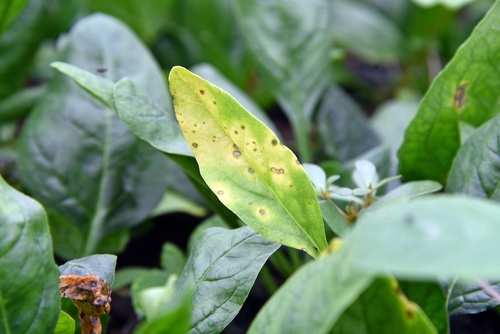
Sage plants can be affected by various fungal diseases that cause white spots on the leaves. These diseases can be caused by fungi such as powdery mildew, rust, and leaf spot. In general, fungal diseases are more likely to occur in warm and humid conditions.
Yellowing of the foliage is one of the most common symptoms of fungal diseases in sage plants. The leaves may also turn brown or wilt, and there may be a loss of leaves. In some cases, the stems may become soft and mushy.
Powdery mildew is a common fungal disease that affects sage plants. It appears as a white, powdery growth on the surface of the leaves, which can cause yellowing and curling of the affected foliage.
The disease can spread quickly and cover the whole leaves and stems. It is often found in mid to late summer and doesn’t need a lot of moisture to thrive.
Rust is another fungal disease that can affect sage plants. It appears as rusty spots or blotches on the leaves, which can cause yellowed or spotted/blotched foliage. Dusty spots on top of the leaves and white or rusty bumps on the bottom of the leaves are also common symptoms of rust.
Leaf spot is a fungal disease that can cause sage leaves to turn yellow and develop brown spots. The spots may merge together and cause the leaves to turn brown and fall off. This disease is often caused by overwatering or poor drainage.
In some cases, white spots on sage leaves may be caused by sunburn. This can occur when the plant is exposed to too much direct sunlight. The leaves may turn yellow or brown and wilt. To prevent sunburn, it’s important to provide shade for the plant during the hottest part of the day.
The Role of Weather and Environment
The weather and environment play a significant role in the health of sage plants. Sage plants grow best in a garden with well-draining soil and plenty of sunlight. They thrive in warm weather conditions, making mid to late summer the ideal time to plant them.
Wind can also affect sage plants. Strong winds can damage the leaves and cause them to dry out, which can lead to the appearance of white spots. It is important to provide support for sage plants in windy areas to prevent damage.
Compost can be beneficial for sage plants, but it is essential to ensure that the compost is well-rotted before use. Using unrotted compost can introduce fungal spores that can cause powdery mildew, leading to the appearance of white spots on the leaves.
In addition to compost, it is crucial to provide adequate space between sage plants. Overcrowding can create a humid environment that promotes fungal growth, leading to the appearance of white spots.
Sunlight is another crucial factor in the health of sage plants. Sage plants require at least six hours of direct sunlight each day. Insufficient sunlight can weaken the plant, making it more susceptible to disease and pest infestations.
Preventing Fungal Infections
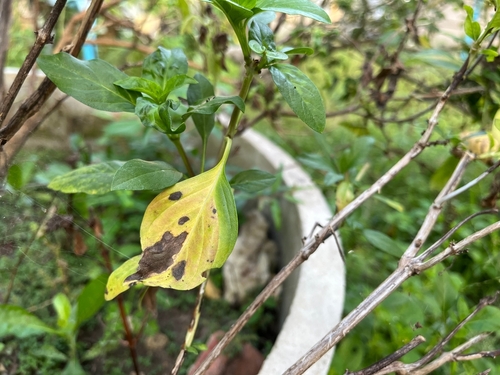
Sage plants are susceptible to fungal infections, which can cause white spots to appear on the leaves. The good news is that there are several steps that can be taken to prevent fungal infections from occurring in the first place.
One effective way to prevent fungal infections is to keep the sage plant well-fed. Sage plants require nitrogen to grow, and a lack of nitrogen can make them more susceptible to infections. Adding compost to the soil can help provide the plant with the necessary nutrients.
Another important factor in preventing fungal infections is ensuring proper drainage. Sage plants do not like to sit in water, and excess moisture can create an environment where fungi can thrive. Make sure the soil is well-draining and that water does not accumulate around the base of the plant.
Pruning can also help prevent fungal infections. Removing any dead or damaged leaves can help improve air circulation around the plant, which can make it less hospitable to fungi. Additionally, pruning can help prevent the spread of infections by removing infected leaves before they have a chance to spread the disease.
Natural predators can also be used to help control fungal infections. Ladybugs, lacewings, and other beneficial insects can help keep populations of harmful insects in check, which can help prevent the spread of fungal infections. Horticultural oil and other pest control measures can also be used to prevent the spread of fungal infections.
If a fungal infection does occur, there are several sprays and fungicides available that can help control the spread of the disease. It is important to do research and choose a product that is safe for use on sage plants.
By taking these steps, gardeners can help prevent fungal infections from occurring on their sage plants. With proper care and attention, sage plants can thrive and produce a bountiful harvest.
Effective Treatments for White Spots
When it comes to treating white spots on sage leaves, there are several effective options available. The treatment you choose will depend on the severity of the infection and your personal preference.
1. Fungicides
One of the most common treatments for white powdery spots on sage is a fungicide. Fungicides are chemicals that kill or inhibit the growth of fungi. There are several different types of fungicides available, including neem oil, sulfur, and Bacillus subtilis.
Neem oil is a natural fungicide that is derived from the neem tree. It is effective against a wide range of fungal diseases, including powdery mildew. Sulfur is another effective fungicide that is commonly used to treat powdery mildew.
Bacillus subtilis is a biological fungicide that is safe for people and pets and is effective against powdery mildew.
2. Milk

Believe it or not, milk can also be an effective treatment for white spots on sage leaves. Milk contains a protein called casein, which has antifungal properties. To use milk as a treatment, mix one part milk with two parts water and spray the mixture on the affected leaves.
3. Baking Soda
Baking soda is another natural treatment that can be effective against powdery mildew.
Mix one tablespoon of baking soda, one-half teaspoon of a mild dish detergent, and two and a half tablespoons of olive oil in a gallon of water to make a solution that will repel all kinds of bugs, as well as a fungicide for blight and mildew on the sage plant leaves.
4. Potassium Bicarbonate
Potassium bicarbonate is a natural fungicide that is effective against powdery mildew. It works by changing the pH of the plant’s surface, making it less hospitable to fungi. To use potassium bicarbonate as a treatment, mix one tablespoon of the powder with one gallon of water and spray the mixture on the affected leaves.
5. Sulfur
Sulfur is another effective treatment for powdery mildew on sage leaves. It works by inhibiting the growth of fungi. To use sulfur as a treatment, mix one tablespoon of the powder with one gallon of water and spray the mixture on the affected leaves.
Dealing with Affected Leaves
When sage leaves have white spots, it’s important to address the issue quickly to prevent further damage to the plant. The first step is to remove the affected leaves. This will help prevent the spread of fungal spores to the rest of the plant.
Use clean pruning shears to break off the leaves at the stem. Do not pull the leaves off, as this can damage the plant.
After removing the affected leaves, it’s important to dispose of them properly. Do not compost them, as this can spread the fungal spores to other plants. Instead, place them in a plastic bag and throw them away.
To prevent the spread of powdery mildew to other parts of the plant, it’s important to spray the plant with a fungicide. Mix the fungicide according to the instructions on the package and pour it into a spray bottle.
Spray the affected areas of the plant, as well as the surrounding shoots and new growth. Be sure to cover the whole leaves, both top and bottom.
To prevent further outbreaks of powdery mildew, it’s important to keep the plant healthy. Provide adequate sunlight and water, and fertilize the plant regularly. Avoid overhead watering, as this can create conditions that are favorable for fungal growth.
Recognizing Other Plant Diseases

Aside from powdery mildew, there are several other plant diseases that can cause white spots on sage leaves. Here are some other diseases that gardeners should be aware of:
1. Downy Mildew
Downy mildew is a fungal disease that can cause white or grayish spots on the leaves of sage plants. The spots may also have a yellow or brown halo around them. Downy mildew is caused by a fungus-like pathogen that thrives in cool, wet conditions.
The disease spreads through spores that are carried by wind or water. To prevent downy mildew, gardeners should avoid overwatering their sage plants and ensure that the soil has good drainage.
2. Pathogens
Various pathogens can cause white spots on sage leaves. For example, bacterial leaf spot can cause small white or grayish spots on the leaves of sage plants. The spots may have a yellow halo around them and can eventually turn brown.
Bacterial leaf spot is caused by a bacterium that thrives in warm, humid conditions. To prevent bacterial leaf spot, gardeners should avoid overhead watering and ensure that their sage plants have good air circulation.
3. Leafhoppers and Whiteflies
Leafhoppers and whiteflies are both insects that can cause white spots on sage leaves. These insects feed on the sap of the plant, which can cause the leaves to turn yellow and develop white spots.
To prevent these pests, gardeners should use insecticidal soap or neem oil and ensure that their sage plants are well-watered and fertilized.
4. Twist
Twist is a viral disease that can cause white spots on sage leaves. The spots may be irregular in shape and can eventually turn yellow or brown. Twist is spread by aphids, which feed on the sap of the plant and transmit the virus.
To prevent twist, gardeners should use insecticidal soap or neem oil to control aphids and ensure that their sage plants are healthy and well-fertilized.
5. Growing Season
The growing season can also affect the development of white spots on sage leaves. For example, if sage plants are grown in cool, wet conditions, they may be more susceptible to powdery mildew and other fungal diseases.
On the other hand, if sage plants are grown in hot, dry conditions, they may be more susceptible to leafhoppers and whiteflies. Gardeners should be aware of the growing conditions in their area and take steps to prevent plant diseases accordingly.
Additional Considerations
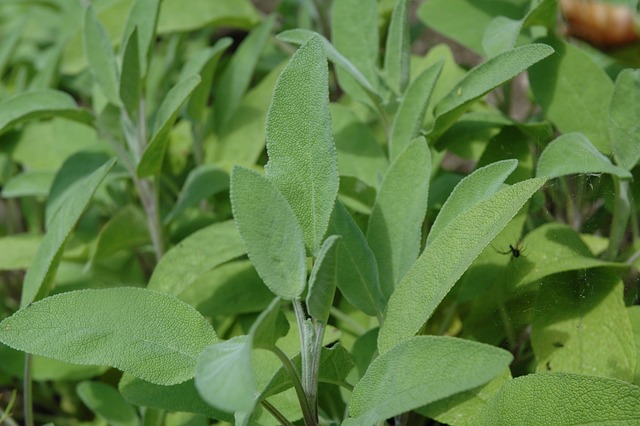
In addition to the causes and fixes for white spots on sage leaves, there are a few other considerations to keep in mind when growing sage.
Firstly, it is important to pay attention to the roots of the sage plant. Sage prefers well-draining soil, so if the roots are sitting in water, it can lead to root rot and other problems. To avoid this, make sure to plant sage in a location with good drainage and avoid overwatering.
Another consideration is the potential harm that can come to the plant from pests and diseases. In addition to the white spots mentioned earlier, sage can be susceptible to other issues like spider mites and powdery mildew. Keeping a close eye on the plant and taking action at the first sign of a problem can help prevent more serious issues from developing.
Sage is also a great plant to support climbing varieties like tomatoes and cucumbers. The strong stems of sage can provide a sturdy support for these plants as they grow and produce fruit.
When it comes to plant debris and compost tea, it is important to be cautious. While these can be great additions to a garden, they can also introduce pests and diseases to the area. To avoid this, make sure to only use high-quality compost and be careful not to introduce any contaminated materials to the garden.
Finally, some gardeners swear by using urine as a natural fertilizer for sage and other plants. While there is some debate about the effectiveness of this method, it is worth considering as a potential option.
Frequently Asked Questions
Can you eat sage with white spots?
Yes, you can still eat sage with white spots, but it’s best to remove the affected leaves first. White spots can be a sign of powdery mildew or other fungal infections, which can affect the flavor and texture of the leaves.
Removing the affected leaves will ensure that you’re only consuming healthy, flavorful sage.
How do I get rid of white spots on my sage plant?
To get rid of white spots on your sage plant, you’ll need to identify the underlying cause of the problem. White spots can be caused by a variety of factors, including fungal infections, insect infestations, and nutrient deficiencies.
Once you’ve identified the cause, you can take steps to address it. For example, if the problem is powdery mildew, you can treat your sage with a fungicide or use a homemade solution of baking soda and water.
How do you get rid of white mold on leaves?
To get rid of white mold on leaves, you’ll need to remove the affected leaves and treat the plant with a fungicide. You can also try using a homemade solution of baking soda and water.
It’s important to address the problem as soon as possible, as white mold can spread quickly and damage the plant.
What nutrient deficiency causes white spots on leaves?
White spots on leaves can be caused by a variety of nutrient deficiencies, including zinc, magnesium, and calcium. If you suspect that your sage plant is suffering from a nutrient deficiency, you can try adding a fertilizer that’s high in the missing nutrient.
What is the best treatment for powdery mildew on sage leaves?
The best treatment for powdery mildew on sage leaves is a fungicide. You can also try using a homemade solution of baking soda and water. It’s important to address the problem as soon as possible, as powdery mildew can spread quickly and damage the plant.
How can I prevent white spots from appearing on my sage leaves in the future?
To prevent white spots from appearing on your sage leaves in the future, you should make sure that your plant is getting enough sunlight, water, and nutrients.
You should also avoid overwatering your plant, as this can create a moist environment that’s ideal for fungal growth. Finally, you should keep an eye out for signs of insect infestations or other problems and address them promptly.

Hey, I’m Lisa and I’ve been an avid gardener for over 30 years. I love writing, talking and living in the garden! Feel free to connect with me on my socials below

